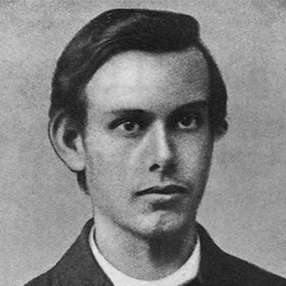To a Snowflake
What heart could have thought you?—
Past our devisal
(O filigree petal!)
Fashioned so purely,
Fragilely, surely,
From what Paradisal
Imagineless metal,
Too costly for cost?
Who hammered you, wrought you,
From argentine vapour?—
“God was my shaper.
Passing surmisal,
He hammered, He wrought me,
From curled silver vapour,
To lust of His mind;—
Thou could’st not have thought me!
So purely, so palely,
Tinily, surely,
Mightily, frailly,
Insculped and embossed,
With His hammer of wind,
And His graver of frost.”
This poem is in the public domain. Published in Poem-a-Day on January 20, 2024, by the Academy of American Poets.
“To a Snowflake” first appeared in New Poems (Copeland and Day, 1897). The text was culled from a ninety-two-line poem titled “Hymn to Snow,” the last twenty-two of which Francis Thompson included in New Poems under the present title. In Winter Facets: Traces and Tropes of the Cold (Peter Lang, 2007), Andrea Dortmann, clinical associate professor and language program director at New York University, writes, “Francis Thompson’s poem ‘To a Snowflake’ explores a snowflake’s aesthetic appeal, its fragility and delicate structure in the form of a dialogue. [. . .] Composed with a minimum of words and techniques, the text seems straightforward. The division into two almost equal parts of question and answer suggests an exchange between an anonymous asking agency and, if the ‘you’ addressed in the poem’s opening line relates to the title’s apostrophe, a singular snowflake. Struck by the crystal’s lattice-like structure, the voice in the first part desires to find out about the origin and cause of the snowflake’s fragile, but undeniable beauty. The answering part, diacritically set off by quotation marks, builds on various cosmological ideas from Plato to the tradition of physico-theology. The snowflake names ‘God’ as the authority responsible for its splendid shape, thereby calling on the myth of a Demiurge accountable for the creation of the world including the slightest details, excluding the possibility of chance and contingency.”

